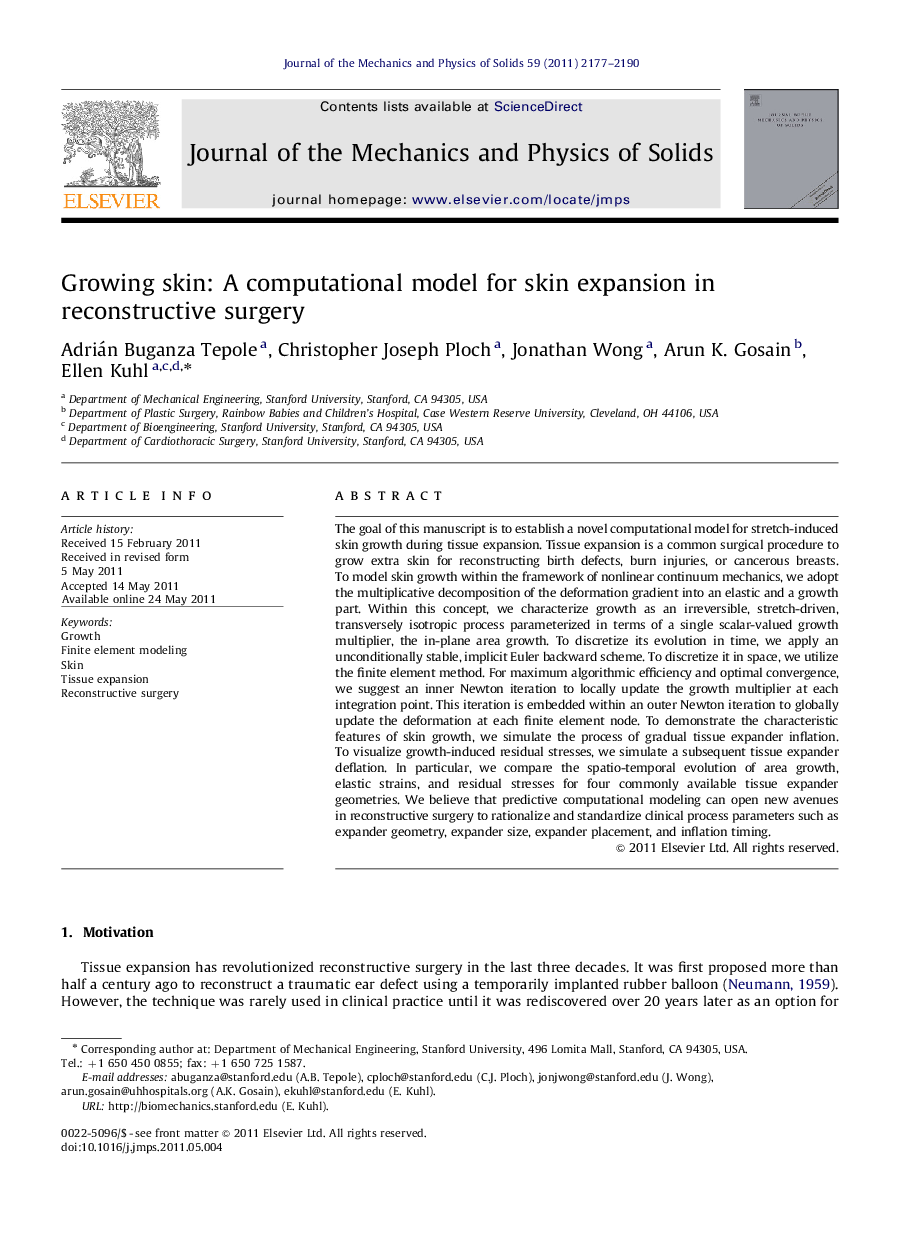| Article ID | Journal | Published Year | Pages | File Type |
|---|---|---|---|---|
| 793288 | Journal of the Mechanics and Physics of Solids | 2011 | 14 Pages |
The goal of this manuscript is to establish a novel computational model for stretch-induced skin growth during tissue expansion. Tissue expansion is a common surgical procedure to grow extra skin for reconstructing birth defects, burn injuries, or cancerous breasts. To model skin growth within the framework of nonlinear continuum mechanics, we adopt the multiplicative decomposition of the deformation gradient into an elastic and a growth part. Within this concept, we characterize growth as an irreversible, stretch-driven, transversely isotropic process parameterized in terms of a single scalar-valued growth multiplier, the in-plane area growth. To discretize its evolution in time, we apply an unconditionally stable, implicit Euler backward scheme. To discretize it in space, we utilize the finite element method. For maximum algorithmic efficiency and optimal convergence, we suggest an inner Newton iteration to locally update the growth multiplier at each integration point. This iteration is embedded within an outer Newton iteration to globally update the deformation at each finite element node. To demonstrate the characteristic features of skin growth, we simulate the process of gradual tissue expander inflation. To visualize growth-induced residual stresses, we simulate a subsequent tissue expander deflation. In particular, we compare the spatio-temporal evolution of area growth, elastic strains, and residual stresses for four commonly available tissue expander geometries. We believe that predictive computational modeling can open new avenues in reconstructive surgery to rationalize and standardize clinical process parameters such as expander geometry, expander size, expander placement, and inflation timing.
